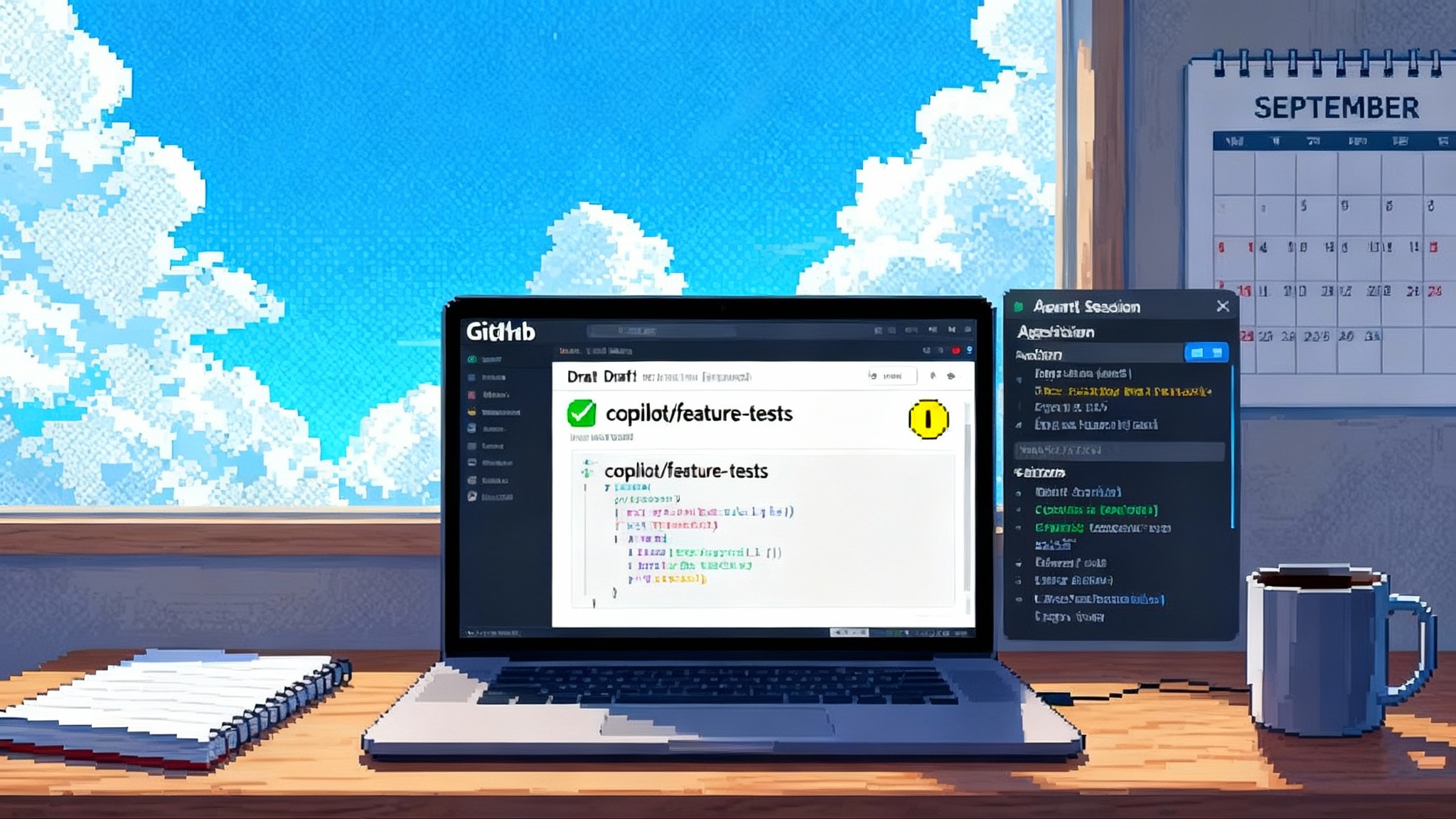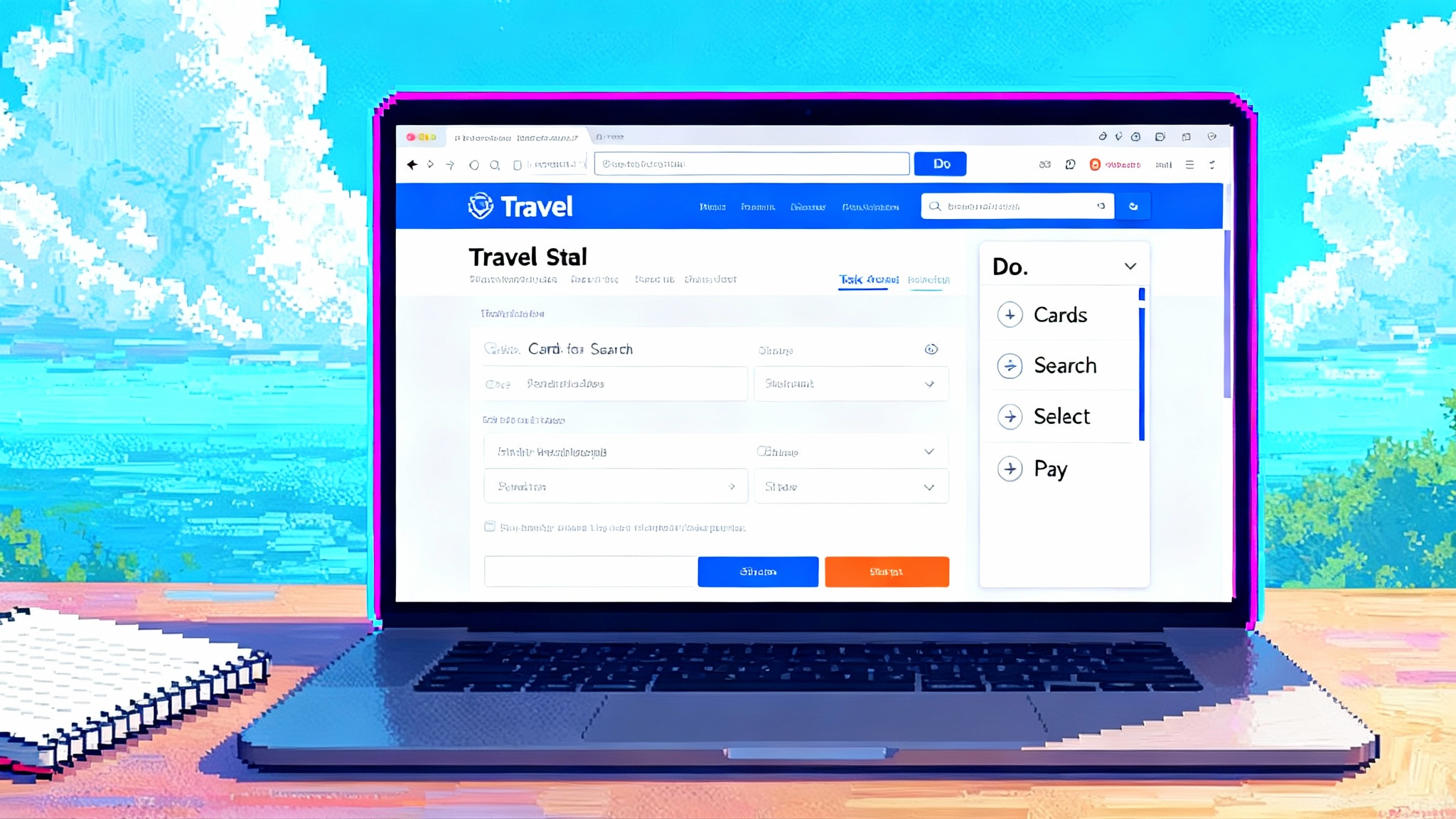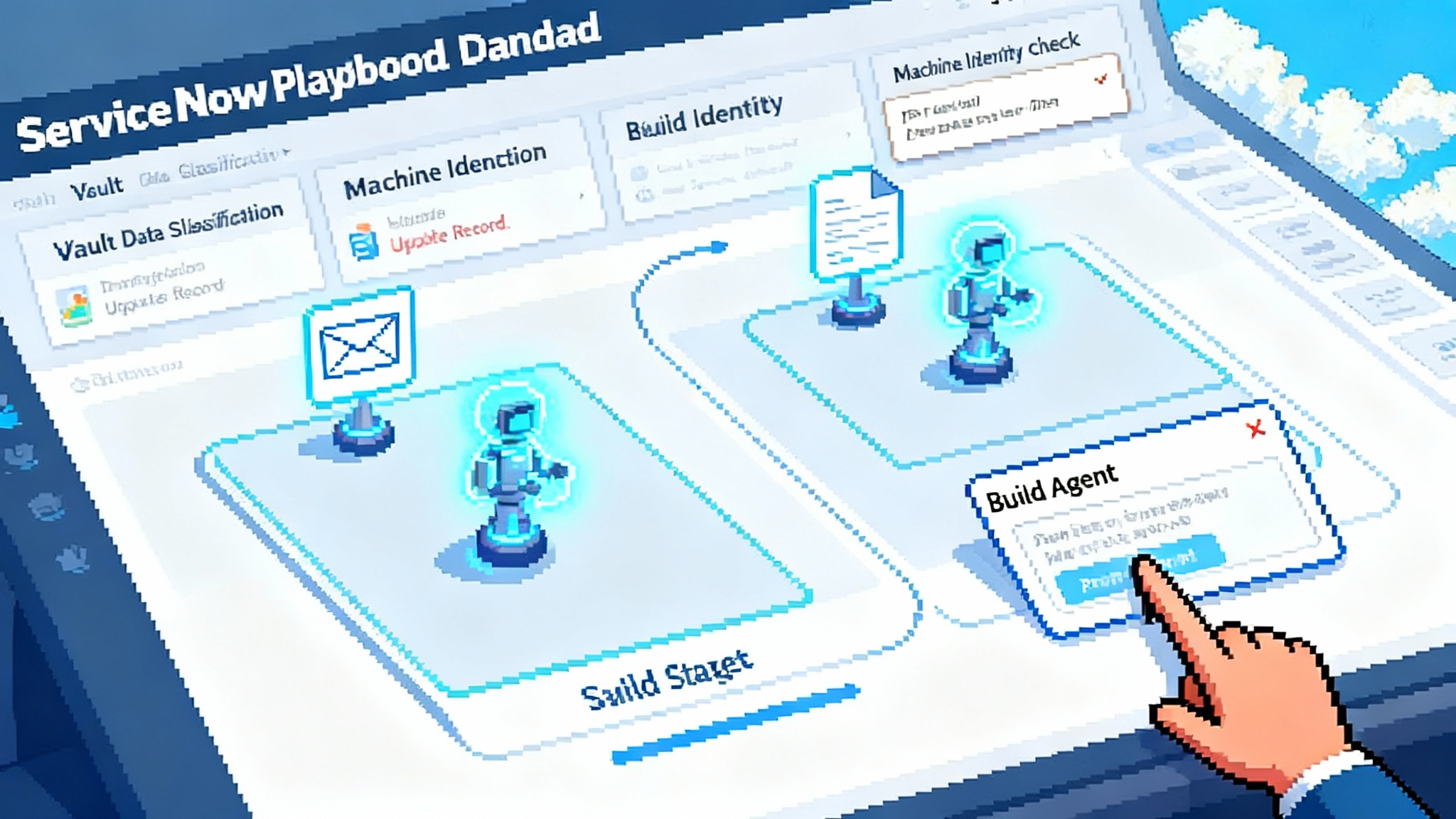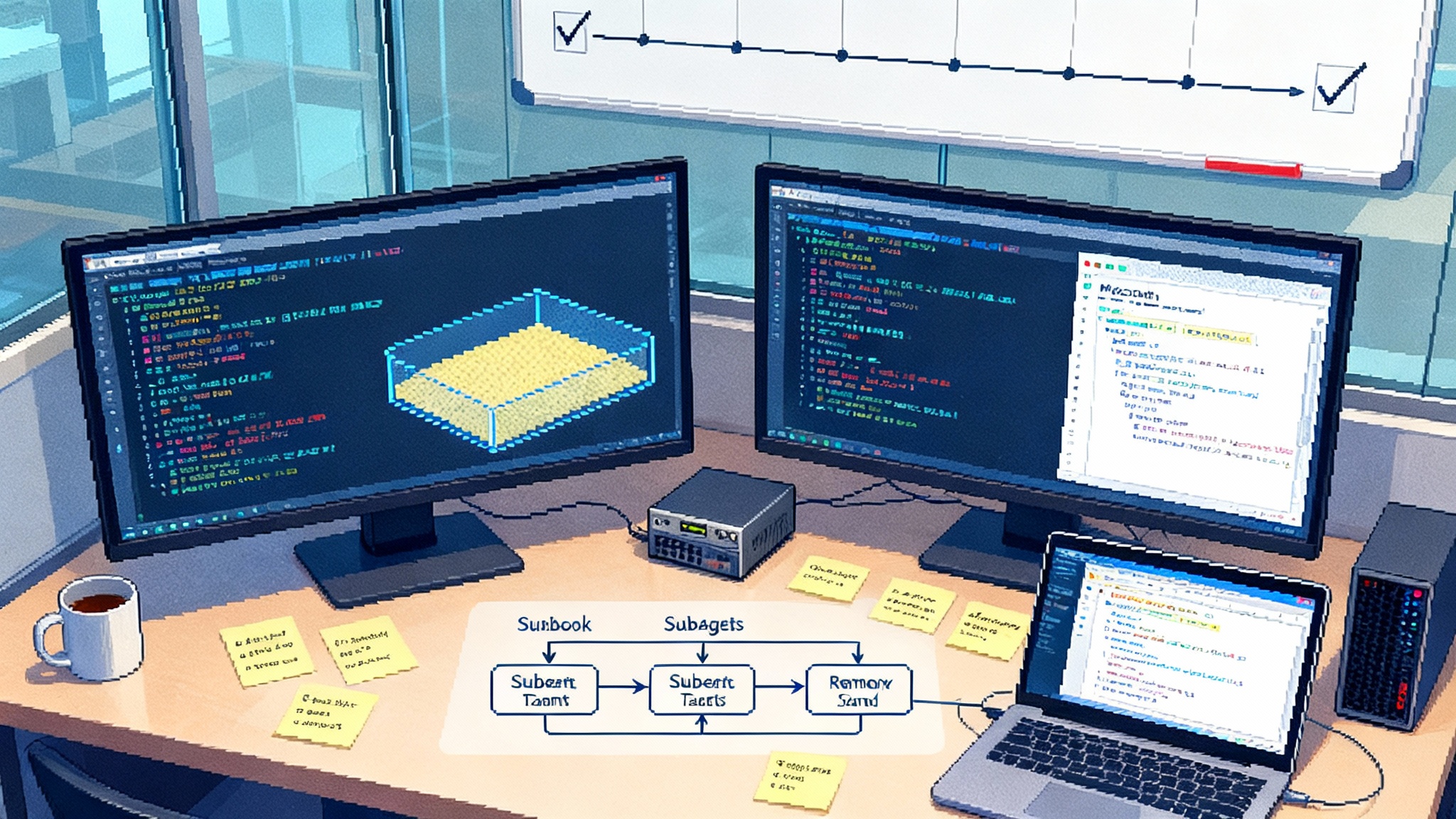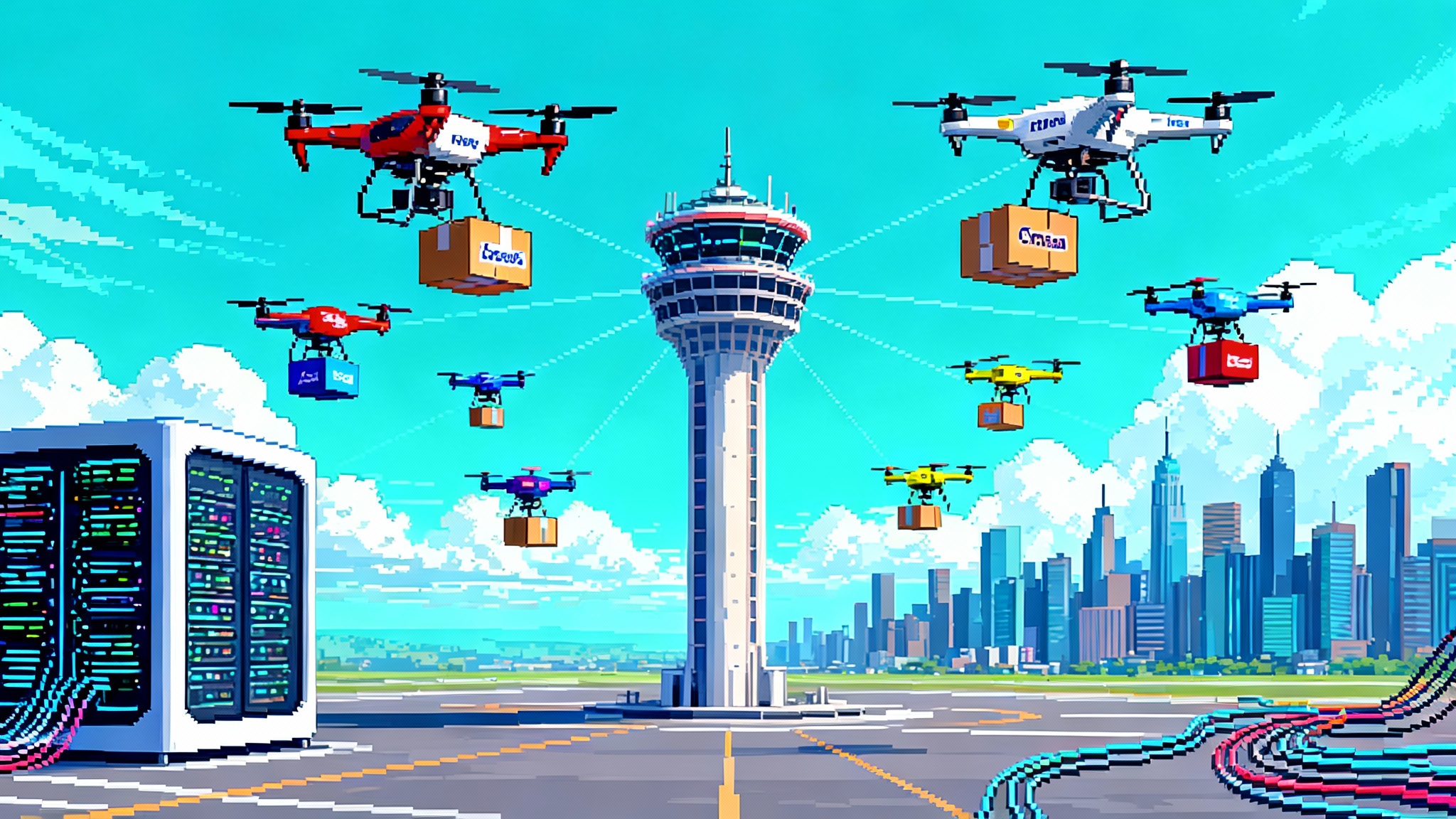Agentforce 3 Is The Tipping Point For Enterprise AI Agents
Salesforce’s Agentforce 3 pairs a real Command Center with MCP-native interoperability and FedRAMP High authorization, making observability, governance, and reliability the new table stakes for enterprise AI teams.

The week enterprise AI agents grew up
On June 23, 2025, Salesforce announced Agentforce 3, a major upgrade that puts hard operational controls at the center of the agent conversation. The release introduced a dedicated Command Center for observability, native support for the Model Context Protocol, and a slate of reliability and governance features that were previously scattered across tools or missing entirely. In the same arc, Salesforce confirmed that Agentforce is now FedRAMP High authorized in Government Cloud Plus for United States public sector use. Together, those moves mark a tipping point. The race is no longer only about smarter models. It is about seeing, steering, and securing the agents that already exist at work.
If you have been waiting for a signal to scale beyond pilots, this is it. With Agentforce 3, Salesforce is saying the quiet part out loud: most enterprise teams are not blocked by what an agent could do in theory. They are blocked by not knowing what the agent just did, why it did it, and how to guarantee it will do the right thing next time. The new release answers that gap with a Command Center you can put in front of leaders, MCP for clean interoperability, and governance that passes real audits.
Salesforce has framed the release around those pillars in the official communication. For scope and claims, see the Salesforce Agentforce 3 announcement. For the government readiness piece, Salesforce summarizes the authorization in a separate note: Salesforce FedRAMP High summary.
What actually changed: three new table stakes
Think of enterprise agents as a new class of digital worker. If you staffed a warehouse with robots, your first purchase after the robots would be a control tower to see where they are, what they are doing, and how safely they operate. Agentforce 3 effectively brings that control tower into software.
Here are the three capabilities that now look like table stakes for any serious deployment.
1) Observability first command centers
- Why it matters: Without end to end visibility, teams do not know if a failure is due to a tool, a model, a prompt, a data source, or a policy. Root cause analysis becomes guesswork. You cannot manage what you cannot see.
- What Agentforce 3 contributes: A Command Center that unifies metrics, traces, and outcomes across the agent lifecycle. Leaders can inspect conversation threads, drill into tool calls, watch error classes, and see recommendations for improvement. The core idea is to make agent work legible, so improvements are evidence based rather than anecdotal.
- What to expect next across the market: Observability is no longer a nice to have. Enterprise buyers will treat agent level tracing and quality metrics as default requirements. If your platform does not offer this out of the box, it will be judged incomplete.
Observability does more than show red or green lights. It provides the objective record that unlocks better prompts, better tool scopes, and better policies. In practical terms, it lets you answer executive questions with numbers instead of stories. When time to resolution spikes or task success dips, you can see which step in the chain broke and fix it.
2) MCP native interoperability
- What it is: Model Context Protocol, often shortened to MCP, is an open protocol that lets agents discover and use tools and resources through a standard interface. Think of it as a USB C port for enterprise tools. If a vendor ships an MCP server for their product, any MCP capable agent runtime can discover and use it without custom glue.
- Why it matters: Interoperability removes the hidden tax of one off integrations. It also enables governance, because the same policy engine can apply consistent controls to every tool the agent touches.
- What Agentforce 3 contributes: A native MCP client and an expanded AgentExchange marketplace that lists MCP servers from a broad set of partners. That shrinks the latency between idea and impact. New actions can be loaded with less code and controlled centrally.
- What to expect next across the market: Vendors will converge on MCP as a default path for tools and data access, even while they continue to offer proprietary connectors. Expect agent runtimes to differentiate on security posture, identity, and policy, not basic connectivity.
If you want a sense of where the industry is heading, look at how cross vendor coordination is maturing. Google’s unification work around multi vendor agents is one example, explored in our piece on Google's Agent Engine and A2A. The pattern is the same: reduce friction to connect tools, then introduce consistent guardrails on top.
3) Strict governance you can implement
- Why it matters: Enterprises cannot scale agents without enforceable controls on identity, data access, and behavior. Legal teams need evidence for audits. Security teams need to constrain blast radius. Operations teams need to set service levels and see violations.
- What Agentforce 3 contributes: FedRAMP High authorization for public sector deployments, automatic model failover, regionalization, and inline grounding citations. In practice, this means a path to run agents in the most demanding environments. It also signals that Salesforce expects procurement to ask hard questions and is preparing receipts.
- What to expect next across the market: Buyers will scrutinize identity, isolation, data locality, and record keeping with the same energy they bring to model benchmarks. The platform race now runs through governance. That is why Microsoft’s security ecosystem keeps moving closer to agent execution. For context on that direction, see our view on the Microsoft Security Store future.
Governance is the difference between a flashy demo and a durable program. When your policy is enforced as code and tied to identity, you can expose more autonomy with less fear. When your tracing and grounding are consistent, you can answer the audit in an afternoon instead of a quarter.
A practical Agent Ops plan for the next 90 days
The biggest risk right now is not moving, or moving without structure. Use this quarter to put in place a practical operating model. Start with one business unit and one cross functional pod, then scale.
Weeks 1 to 2: choose the work and define guardrails
- Use case short list: collect ten high volume tasks that meet three criteria. They must have a clear success definition, toolable actions, and a measurable business outcome. Examples include refunds under a dollar threshold, supplier onboarding checks, internal ticket triage, and data entry quality checks.
- Risk profile: classify each task by data sensitivity, automation impact, and user facing exposure. Assign a risk level from 1 to 4. This drives your review gates later.
- Service level objectives: for each task, set target success rate, cost per action, and maximum time to completion. Example: 95 percent task success within five minutes at less than fifty cents per completed task.
- Human in the loop bands: define bands where a human must approve, sample, or review. Example: low risk tasks auto approve below a cost or time limit, medium risk tasks require sampled review at 10 percent, high risk tasks require approval until the agent proves stable.
Weeks 3 to 4: instrument and standardize
- Observability plumbing: enable thread level traces, tool invocation logs, and model outputs. Tag every run with use case, version, and risk level. Do not skip the tags. They make your dashboards useful rather than noisy.
- Evaluation set: build a gold standard set of 200 to 500 test cases per use case with clear pass or fail checks. Cover typical, edge, and adversarial inputs. Update this set weekly as you learn.
- MCP enablement: choose two tools that already offer MCP servers and route them through a single gateway with policy. Start with read only operations, then escalate to write actions with approval.
- Policy baseline: write the minimum viable policy for identities, tool scopes, data retention, prompt safety filters, and escalation rules. Store as code. Review weekly.
Weeks 5 to 6: run controlled pilots
- Shadow mode first: route a copy of real traffic to the agent while humans continue to work. Measure task success, time, cost, exceptions, and intervention requests. Track discrepancies between human and agent outcomes.
- Progressive exposure: move from shadow to limited live traffic. Start at 5 percent, then 20 percent, then 50 percent. Do not go to 100 percent unless success and safety hit targets for two consecutive weeks.
- Red team: run structured adversarial tests. Include prompt collisions, data exfiltration attempts, tool abuse, and hallucination traps. Record failures and add them to your evaluation set.
Weeks 7 to 12: scale and stabilize
- Playbooks: create runbooks for the top five failure modes you see in the logs. Examples include tool timeout, authentication mismatch, cyclic reasoning, cost spike, and grounding failure.
- Hotfix flow: define who ships what in under two hours. Examples include prompt changes by the agent design lead, tool scopes by the platform engineer, and policy filters by the security engineer.
- Drift checks: set up daily checks for model performance and cost. If you see quality drift or a cost spike, auto rollback to the last known good configuration.
- Governance reviews: schedule biweekly reviews with security and compliance. Walk through traces, sampled transcripts, and policy logs. Use these meetings to grant higher autonomy bands where justified by data.
KPIs that prove you are scaling safely and fast
Executives need simple numbers that reflect reality. Here is a KPI set that balances safety, quality, speed, and cost. Implement all of them and set targets per use case.
Safety and governance
- Policy coverage rate: percentage of tool actions and data sources governed by explicit policy. Target 100 percent for live use cases.
- Agent identity coverage: percentage of agents with unique, auditable identities in your directory and logs. Target 100 percent.
- Tool scope violations: rate of attempts to call an unapproved tool or action per 1,000 tasks. Target under 1 per 1,000. Investigate each incident.
- Sensitive data exposure: percentage of tasks that touch data labeled confidential or higher. Track weekly. Require approvals or masking for anything above your threshold.
Quality and trust
- Task success rate: tasks completed to specification without human correction. Target 95 percent or better for low risk, 90 percent for medium, 85 percent for high in early stages, then tighten.
- Hallucination incident rate: number of responses with unsupported claims per 1,000 tasks. Target near zero for externally facing tasks. Use grounding checks to enforce.
- Correction depth: average number of edits required when a human intervenes. Target under one edit per correction. This measures how close the agent is to first time right.
Speed and scale
- Time to resolution: median time to complete a task. Track by percentile bands. Look for long tails.
- Autonomy ratio: percentage of tasks completed end to end without human help. Increase deliberately along risk bands as confidence grows.
- Mean time to rollback: time from detecting a quality or safety issue to reverting to a safe configuration. Target under two hours.
Cost and efficiency
- Cost per completed task: all in run cost divided by successfully completed tasks. Watch how it moves with autonomy.
- Cost variance: weekly percentage change in cost per task. Sudden spikes often indicate new tool loops or grounding failures.
- Tool error rate: percentage of tool calls that fail due to permissions, network, or schema mismatch. Fix upstream, not in prompts.
Learning and improvement
- Evaluation pass rate: percentage of your gold standard tests that pass in the latest build. Do not ship if this drops more than two points week over week.
- Incident backlog age: median days open for safety or quality incidents. Target under seven days. Aging incidents are risk debt.
Interoperability
- MCP coverage: percentage of tool integrations delivered over MCP. Higher coverage means easier audits and faster onboarding.
- Duplicate connector count: number of one off connectors still in production for the same tool category. Drive to zero over time.
Design patterns that reduce risk and speed scale
These patterns are simple to implement and compound in impact.
- Action budgets: set a maximum number of tool calls or a maximum cost per task. If the agent hits the limit, it escalates to a human. This stops silent runaway loops.
- Risk gates: map risk levels to review rules. Low risk tasks can ship after passing automated evaluations. Medium risk requires sampled review and a clean week of observability. High risk demands human approval until the agent reaches targets three weeks in a row.
- Grounding as a contract: require the agent to cite the source for any external claim. If a claim lacks a source, the agent must ask for help or switch to a safe fallback.
- Single source of policy truth: store policy as code and load it into the runtime at session start. Never hardcode rules in prompts.
- Progressive autonomy: raise autonomy bands only after hard evidence. For example, move from 20 percent to 50 percent exposure after two weeks of stable metrics and no safety incidents.
- Shadow to live to self healing: always start in shadow mode, then limited live, then full live with automatic rollback on drift or incident.
For teams building on open components, the playbook often includes data pipelines and experiment tracking that span multiple systems. If that is your environment, our earlier piece on Agent Bricks and MLflow 3 outlines how to keep experimentation cohesive while preserving safety and cost controls.
A quick comparison to frame your platform choice
- Salesforce Agentforce 3: turns observability, interoperability, and governance into first class features. The Command Center is designed for non specialist leaders to manage agent fleets. Native Model Context Protocol support and an expanding marketplace reduce integration time. FedRAMP High authorization in Government Cloud Plus opens the public sector and signals a serious compliance posture.
- Microsoft Azure AI Foundry agent service: converging on the same pillars. Foundry emphasizes end to end observability and continues to tie agent identity into enterprise directories for stronger policy enforcement. It has embraced the Model Context Protocol for tool interoperability.
- NVIDIA NIM and NeMo: optimized for performance and infrastructure control with strong building blocks for guardrails and observability through partner integrations and Kubernetes operators. Best in class when you need to run models on your own accelerated infrastructure with consistent telemetry and safety components.
The point is not that one wins on all dimensions. The point is that all three are competing on operational control. Model quality still matters, and you should test it case by case, but the platform race now runs through command centers, open tool protocols, and enforceable governance.
How to brief your leadership team this week
- Decision to take: fund an Agent Ops pod for one quarter to establish the operating model and ship measured impact on two use cases.
- Success definition: hit 90 percent task success, cut median time to resolution by 30 percent, reduce cost per completed task by 25 percent, all while recording zero high severity safety incidents.
- Guardrails to adopt: observability first, MCP for integrations, policy as code, progressive autonomy with gates, and a two hour rollback target.
- Budget to expect: one product manager, one platform engineer, one agent designer, one data or evaluation engineer, plus fractional security and legal. Tooling budget should prioritize observability and evaluation over yet another model.
The bottom line
Agentforce 3 is a milestone because it normalizes what serious teams already learned by trial and error. If you cannot see an agent’s work, you cannot improve it. If your tools do not plug in cleanly, you will drown in glue code. If your governance is not real, deployment stalls or risk accumulates. The market is aligning around those truths. Your job is to turn them into practice.
Start with one pod, two use cases, and the checklist above. In ninety days you will know if agents can carry real work in your organization, and you will have the data to scale with confidence.


